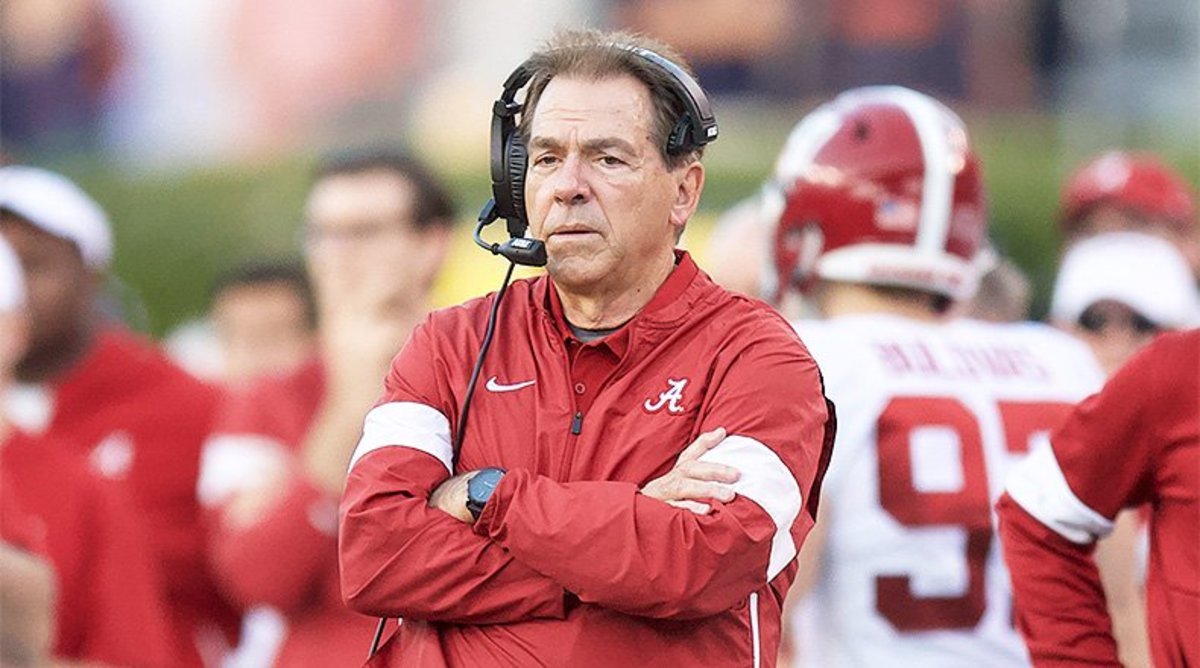BleedGopher
Well-known member
- Joined
- Nov 11, 2008
- Messages
- 63,983
- Reaction score
- 22,730
- Points
- 113
per Athlon:
Recruiting is the foundation for winning national championships, competing for CFB Playoff berths or performing at a high level in college football. While recruiting rankings aren’t 100 percent accurate, there is plenty of truth in the rankings and evaluations by the experts. Additionally, with advances in technology to watch more prospects, along with more offseason camps, the rankings for prospects and classes as a whole are more accurate than they were just a few years ago. Since the start of the CFB Playoff era, all six champions have come from teams ranked inside of the top five in overall roster talent. It’s no secret what a program needs in order to win big at this level. Great coaching, support staffs, state-of-the-art training facilities and luck certainly helps, but talent on the roster (and player development) provides a significant head start in the race to win it all each season.
Just how important are recruiting rankings and the overall talent evaluation? Alabama (No. 1) has won five national championships since 2009. Additionally, the Crimson Tide, LSU, Clemson, Georgia and Ohio State - the top five teams in this metric - have all played for or won a national title in the CFB Playoff era. Three teams from the SEC rank inside of the top four for 2020, with Ohio State (No. 3) and Clemson (No. 5) rounding out the top five.
Below are the national recruiting ranking averages for the Power 5 schools, Notre Dame and BYU over the last five classes according to 247Sports Team Composite rankings and each team's record over the last five seasons. Obviously, this doesn't take into account attrition. However, with a five-year window in place, this should be considered relatively even across the conference.

 athlonsports.com
athlonsports.com
Go Gophers!!
Recruiting is the foundation for winning national championships, competing for CFB Playoff berths or performing at a high level in college football. While recruiting rankings aren’t 100 percent accurate, there is plenty of truth in the rankings and evaluations by the experts. Additionally, with advances in technology to watch more prospects, along with more offseason camps, the rankings for prospects and classes as a whole are more accurate than they were just a few years ago. Since the start of the CFB Playoff era, all six champions have come from teams ranked inside of the top five in overall roster talent. It’s no secret what a program needs in order to win big at this level. Great coaching, support staffs, state-of-the-art training facilities and luck certainly helps, but talent on the roster (and player development) provides a significant head start in the race to win it all each season.
Just how important are recruiting rankings and the overall talent evaluation? Alabama (No. 1) has won five national championships since 2009. Additionally, the Crimson Tide, LSU, Clemson, Georgia and Ohio State - the top five teams in this metric - have all played for or won a national title in the CFB Playoff era. Three teams from the SEC rank inside of the top four for 2020, with Ohio State (No. 3) and Clemson (No. 5) rounding out the top five.
Below are the national recruiting ranking averages for the Power 5 schools, Notre Dame and BYU over the last five classes according to 247Sports Team Composite rankings and each team's record over the last five seasons. Obviously, this doesn't take into account attrition. However, with a five-year window in place, this should be considered relatively even across the conference.

Ranking College Football's Rosters for 2020
Recruiting is the foundation for winning national championships, competing for CFB Playoff berths or performing at a high level in college football. While
Go Gophers!!
